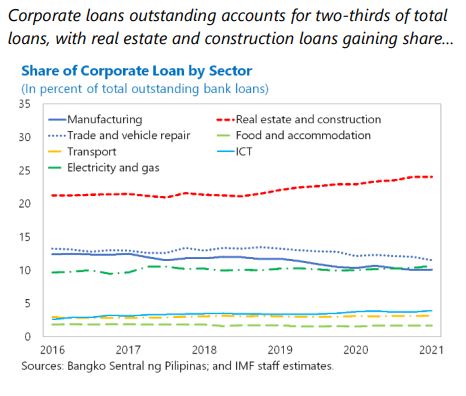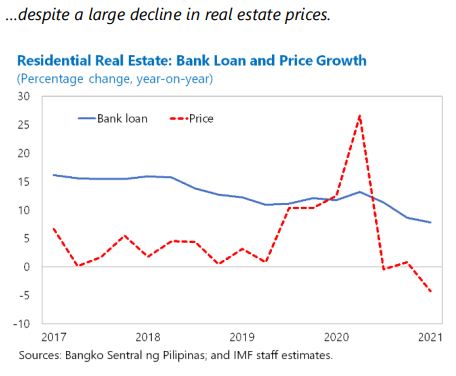Friday, September 24, 2021
Housing View – September 24, 2021
On cross-country:
- The Global Housing Market Is Broken, and It’s Dividing Entire Countries. The dream of owning a home is increasingly out of reach. Democratic and authoritarian governments alike are struggling with the consequences. – Bloomberg
- House prices a persistent pressure on euro zone inflation, ECB study shows – Reuters
- Urban Resilience – NBER
- The role of macroprudential policies during economic crises – BIS
On the US:
- Housing Market Expected to Stay Stable as COVID-era Protections End – Zillow
- Hot U.S. Housing Market Cooled Some in August. Existing-home sales dropped 2% from the prior month as buyers pulled back, supply tightened and prices eased – Wall Street Journal
- Biden Is Trying to Make Housing More Affordable. Without State Action, It’s Not Enough. – Barron’s
- How a Hot Housing Market Exacerbates Inequality. Homeownership is becoming even less attainable as bidding wars, cash offers and racist ideas about buyers further disadvantage people of color. – Bloomberg
- A New Housing Regulator Could Make The American Dream More Accessible For Millions – NPR
- Vacant Homes Aren’t Making Cities Expensive. And vacancy taxes won’t make them affordable. – Reason
- Americans Haven’t Been This Down on Housing Market Since 1982 – Bloomberg
- Builder Confidence Steadies as Material and Labor Challenges Persist – National Association of Home Builders
- Supply and Labor Constraints Continue to Hinder Economic Growth, Home Sales. Rising Inflation Considered a Risk to Mortgage Rates, Housing Affordability – Fannie Mae
- FHFA Capital Rule Listening Session: Using Accessory Dwelling Units to Increase Housing Supply – American Enterprise Institute
- California’s New Housing Laws: Here’s What to Know. Gov. Gavin Newsom has signed two bills aimed at easing the state’s housing crisis. – New York Times
- Why The City Will Survive The Age Of Pandemics And Remote Work – NPR
On China
- Can China’s outsized real estate sector amplify a Delta-induced slowdown? – VoxEU
- China’s property slowdown sends chill through the economy. New homes have anchored growth for decades but Beijing is determined to rein in prices – FT
- The real risk from Evergrande. The main worry is growth, not contagion – FT
- What are the systemic risks of an Evergrande collapse? – The Economist
- Evergrande’s place in China’s house of cards – Atlantic Council
- How Beijing’s Debt Clampdown Shook the Foundation of a Real-Estate Colossus. China Evergrande’s looming collapse and its ripple effect on the economy will pose a test for the government’s campaign to keep housing affordable for the masses – Wall Street Journal
- ‘China’s Lehman Brothers moment’: Evergrande crisis rattles economy. President Xi Jinping faces serious test of his financial reforms as struggles of property giant send ripples through real-estate sector – The Guardian
- Understanding Evergrande, the Chinese Real Estate Conglomerate That’s Nearing Collapse. Can a real estate developer be too big to fail? – Bloomberg
- The knock-on effects of the Evergrande affair. Bringing the real estate sector down to size will slow China’s growth – FT
- China’s mom-and-pop investors, builders and homebuyers caught in Evergrande debt crisis – Reuters
- Evergrande and the end of China’s ‘build, build, build’ model. Valued at $41bn in 2020, the spectacular unravelling of the property group exposes deep flaws in Beijing’s growth strategy – FT
- Potential collapse of Chinese property developer Evergrande could hit Australian iron ore exports. Australian Strategic Policy Institute says Coalition should take pre-emptive action with global trade umpire in case demand for commodity dries up – The Guardian
- China and U.S. Housing Crises: Failures of Central Planning – Cato Institute
- China Macro Property data Update – August – Real Estate Foresight
On other countries:
- [Australia] The Housing Market and Financial Stability – Reserve Bank of Australia
- [Australia] Property Value at Risk in Australian Climate Hot Spots, RBA Says – Bloomberg
- [Australia] RBA Ramps Up Warnings About Soaring House Prices, Instability Risk. The warning comes as Australian house prices are expected to climb by more than 20% in 2021 – Wall Street Journal
- [Australia] Soaring housing debt a financial risk: Reserve Bank – The Sydney Morning Herald
- [New Zealand] Reserve Bank takes action over ‘unsustainable’ house prices. The Reserve Bank (RBNZ) has tightened loan-to-value restrictions in a renewed bid to cool the housing market. – RNZ
- [United Kingdom] U.K. House Prices Stabilize as New Listings to Sell Jump 14% – Bloomberg

On cross-country:
- The Global Housing Market Is Broken, and It’s Dividing Entire Countries. The dream of owning a home is increasingly out of reach. Democratic and authoritarian governments alike are struggling with the consequences. – Bloomberg
- House prices a persistent pressure on euro zone inflation, ECB study shows – Reuters
- Urban Resilience – NBER
- The role of macroprudential policies during economic crises – BIS
On the US:
Posted by at 5:00 AM
Labels: Global Housing Watch
Wednesday, September 22, 2021
Can China’s outsized real estate sector amplify a Delta-induced slowdown?
From a VoxEU post by Ken Rogoff:
“The Chinese economy was able to sharply rebound from the Covid pandemic, helping to sustain a housing boom. The country faces a multitude of challenges over the medium term, however, on top of the much more virulent Delta variant. This column argues that the footprint of China’s real estate sector has become so large – with real estate production and property services accounting for 29% of the country’s GDP – that absorbing a significant housing slowdown would significantly impact overall growth, even absent a financial crisis.”

From a VoxEU post by Ken Rogoff:
“The Chinese economy was able to sharply rebound from the Covid pandemic, helping to sustain a housing boom. The country faces a multitude of challenges over the medium term, however, on top of the much more virulent Delta variant. This column argues that the footprint of China’s real estate sector has become so large – with real estate production and property services accounting for 29% of the country’s GDP – that absorbing a significant housing slowdown would significantly impact overall growth,
Posted by at 5:42 AM
Labels: Global Housing Watch
Thursday, September 16, 2021
Housing Market in Belgium
From the IMF’s latest report on Belgium:

“Increased vulnerabilities from real estate call for supervisory vigilance and possible use of macroprudential policies to mitigate stability risks. Despite the crisis, prices of residential and some commercial RE segments (e.g., logistics) have risen, also supported by low interest rates. In addition, house prices benefitted from the channeling of some of the excess savings accumulated during the pandemic (€25 billion, 5½ percent of GDP, in 2020) into residential properties. In a market correction the quality of RE assets, which account for a sizable share of financial-sector portfolios, may deteriorate. The NBB has appropriately maintained a risk-weight add-on for housing loans in place since December 2013 and affirmed December 2019 supervisory expectations that set limits on riskier mortgage lending. Market developments should be closely monitored for price misalignments. If imbalances mount, macroprudential tightening should be considered to constrain lending to highly-leveraged borrowers and strengthen buffers, also encompassing the commercial segment.”


From the IMF’s latest report on Belgium:

“Increased vulnerabilities from real estate call for supervisory vigilance and possible use of macroprudential policies to mitigate stability risks. Despite the crisis, prices of residential and some commercial RE segments (e.g., logistics) have risen, also supported by low interest rates. In addition, house prices benefitted from the channeling of some of the excess savings accumulated during the pandemic (€25 billion, 5½ percent of GDP,
Posted by at 11:42 AM
Labels: Global Housing Watch
Housing Market in Lithuania
From the IMF’s latest report on Lithuania:
“The positive developments in the housing market so far are estimated to be in line with fundamentals. However, if signs of elevated risks in particular sectors or overheating of the economy start to emerge, targeted macroprudential tools or reactivation of the CCyB will be necessary.”

From the IMF’s latest report on Lithuania:
“The positive developments in the housing market so far are estimated to be in line with fundamentals. However, if signs of elevated risks in particular sectors or overheating of the economy start to emerge, targeted macroprudential tools or reactivation of the CCyB will be necessary.”
Posted by at 11:30 AM
Labels: Global Housing Watch
Subscribe to: Posts





